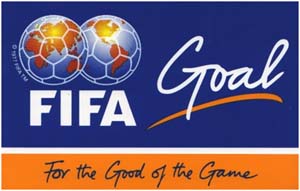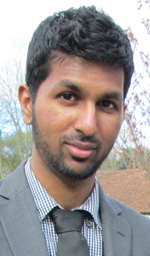Latest update November 8th, 2024 1:00 AM
Latest News
Facilities, Facilities, Facilities!…Guyana needs to implement the FIFA Goal Project
Dec 14, 2014 Sports
By Santokie Nagulendran
In 2013, former National Head Coach and Technical Director of Guyana’s National Team, Jamaal Shabazz, made an
astute analysis of the state of the game in Guyana when he said: “Football in Guyana has no facilities, when you look in Jamaica, all the clubs have grounds that they can pick up revenue, they don’t have to go and beg people to use the ground…in Trinidad they have five stadia, but where are the facilities in Guyana? Who has the ability to engage Government and engage the private sector?”
Fast-forward to the present day, and it is safe to say the issues which Shabazz brought up have not been addressed, as a matter of fact, the state of the game, including development of facilities, is in the same state as it was in 2013. Despite plans from previous administrations to build a football-specific National Stadium in Guyana, currently the National Football team only has Providence Stadium with which to play in, despite it being built primarily for cricket use.
The poor footballing conditions of the pitch at Providence were placed under scrutiny in August when American side Portland Timbers visited Guyana to play Alpha Utd in the CONCACAF Champions League, and images the American players took of the pitch quickly made the news internationally. FOX News in America questioned the credibility of the pitch by simply asking “can we call it a pitch?”, whilst further adding “no joke…a professional soccer team actually plays here”. Guyana thus became the laughing stock of football in the region due to a lack of sufficient facilities.
What Guyana needs is a National stadium designed specifically for football, and one that can become a focal point of football in the region. Jamaica has Montego Bay; Trinidad and Tobago has the Hasely Crawford Stadium, so why is Guyana still playing in a cricket stadium? If Guyana wants to be one of the best teams in the Caribbean, the quality of stadiums available needs to be on par with the current best in the region. As well as a National Stadium, the standard of general stadiums across the country needs to be raised; club teams need professional surfaces to play on, and a place they can call their own, which will also increase chances of generating revenue for the club. Guyana is in a fortunate position when it comes to development: compared to most Caribbean nations it has vast space and land on which to build facilities for football. 
Players in Guyana need improved pitches (both grass and artificial), floodlighting, as well as basic things such as changing facilities, and toilets when it comes to playing and training at their club. Artificial pitches need to be setup so that players can practice throughout the year, regardless of weather. Countries such as Germany and Spain invest a lot of time and money into developing football at a grassroots level, whilst England has recently placed greater emphasis on developing facilities across the nation. It is time Guyana begun to think about how to improve the game at a grassroots level.
Younger players need academies to guide their footballing development, but this cannot be done without substantially qualified coaches. At the moment, Guyana is severely lacking in this area, and as such, there needs to be a long-term investment in the development of elite coaches in the country, who can guide the next generation of players. A long-term strategy plan that outlines the future of Guyana’s development programmes and remains consistent in its aims is something that must happen. The launching of the inaugural U-17 Secondary School Invitational Tournament in Georgetown is a step in the right direction, but young players cannot rely on tournaments alone to develop; there must be structured learning programmes in place for them to develop, and then they can test themselves in tournaments.
New facilities require huge investment in order to be implemented, but there are avenues to explore when looking to generate funds for facilities: Government assistance, business sponsorship, and most importantly, utilising the resources that FIFA provides to Guyana.
FIFA provides $250,000usd per year to Guyana, as well as a bonus $750,000 payment this year due to the earnings they made from the World Cup in Brazil. FIFA has tried to help Guyana in the past, first earmarking them for the Goal project way back in 1999, a programme that provides substantial funds for smaller nations to develop their facilities. In Guyana’s case; from 1 January 2007, work was due to begin on a national technical centre with a playing field, stands, dressing rooms and accommodation, which would enable the federation to offer adequate training conditions to its national teams at all levels. However, Guyana is currently stuck on the first phase of development whilst neighbouring Caribbean countries have completed three phases as outlined by the project.
The financial audit for the Guyana Football Federation has never been publically released by previous GFF Presidents, and as such, it is hard to accurately predict the amount of debt the federation is in. However, it is up to FIFA’s Normalisation Committee to ensure financial transparency within the federation, and ensure that allocated sums are being used to develop much-needed facilities within Guyana. As the committee has members who have been successful in the world of business, they have the ability to generate revenues and funds from the private sector to invest back into football and development. Clinton Urling, Chairman of the committee, has already spoken of ensuring financial transparency within the GFF and providing modern facilities for associations in Guyana, so the future does look positive.
Once Guyana starts to plan and invest in facilities for the young men and women hoping to make a career out of the sport, the rewards will be evident in a better standard of football being played across the nation.
Planning is key to long-term success and begins with an efficient grassroots development programme, fuelled with facilities that allow players to fulfil their potential. Maybe once this is achieved, in the long-term we will one day see Guyanese players plying their trade at top clubs across Europe and the National Team becoming one of the best sides in the region.
Share this:
- Click to print (Opens in new window)
- Click to email a link to a friend (Opens in new window)
- Click to share on Facebook (Opens in new window)
- Click to share on WhatsApp (Opens in new window)
- Click to share on Twitter (Opens in new window)
- Click to share on Pinterest (Opens in new window)
- Click to share on Pocket (Opens in new window)
- Click to share on Tumblr (Opens in new window)
- Click to share on Reddit (Opens in new window)
- Click to share on LinkedIn (Opens in new window)
Related
Similar Articles

The Glenn Lall Show | November, 6th, 2024
Follow on Tik Tok @Glennlall
THE BLUNT OF THE DAY

Sports
Nov 08, 2024
Bridgetown, Barbados – Cricket West Indies (CWI) has imposed a two-match suspension on fast bowler Alzarri Joseph following an on-field incident during the 3rd CG United ODI at the Kensington...Features/Columnists
A lesson from the bread lines of America
…Peeping Tom Kaieteur News- If the American elections of 2024 delivered any one lesson to the rest of the world, it... more
Rising Gun Crimes in the Caribbean: Urgent Action required by all
By Sir Ronald Sanders Kaieteur News – There is an alarming surge in gun-related violence, particularly among younger... more
Publisher’s Note
Freedom of speech is our core value at Kaieteur News. If the letter/e-mail you sent was not published, and you believe that its contents were not libellous, let us know, please contact us by phone or email.
Feel free to send us your comments and/or criticisms.
Contact: 624-6456; 225-8452; 225-8458; 225-8463; 225-8465; 225-8473 or 225-8491.
Or by Email: [email protected] / [email protected]
Weekend Cartoon















